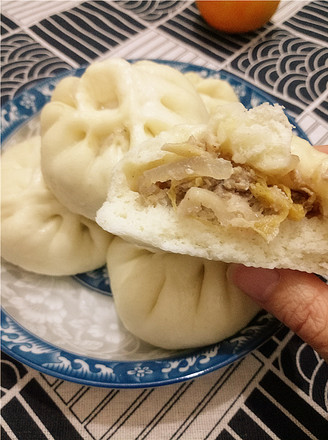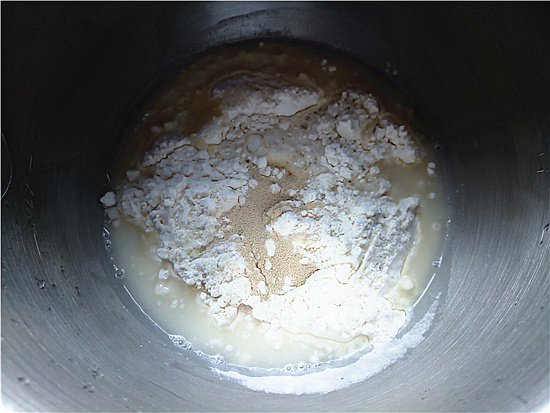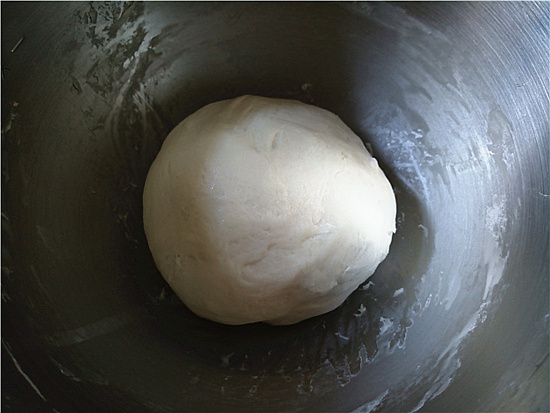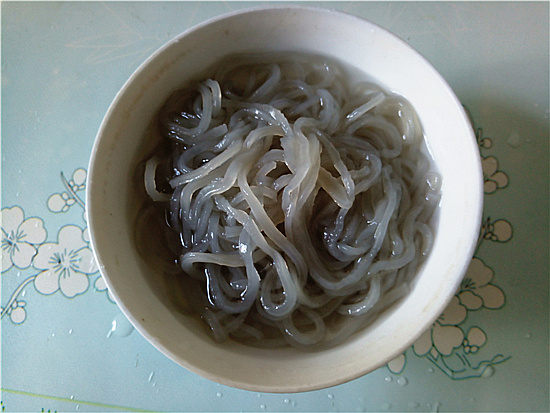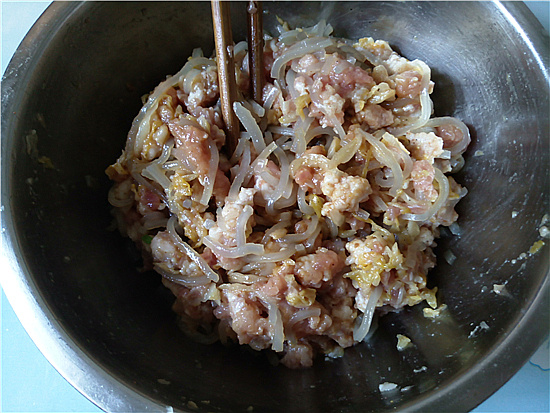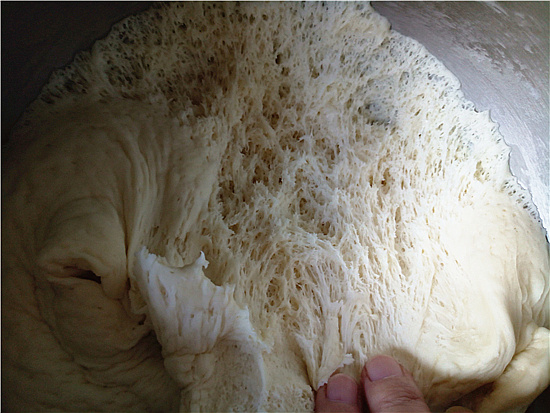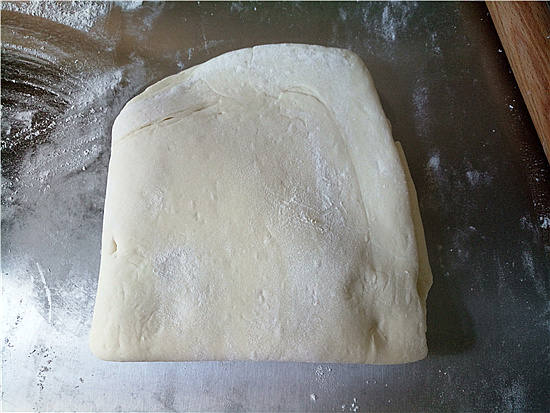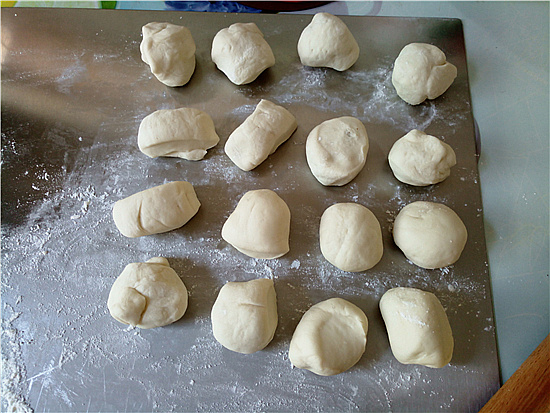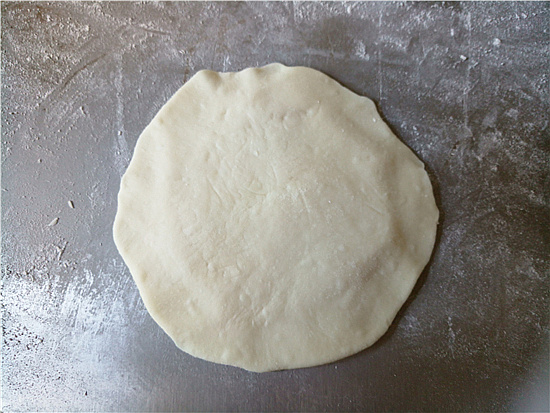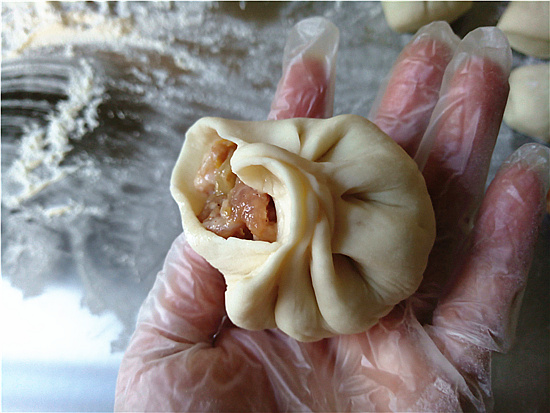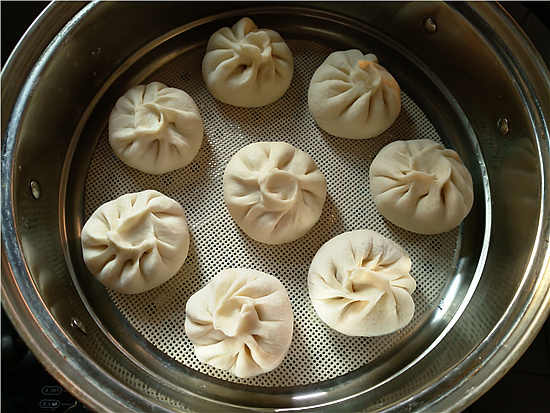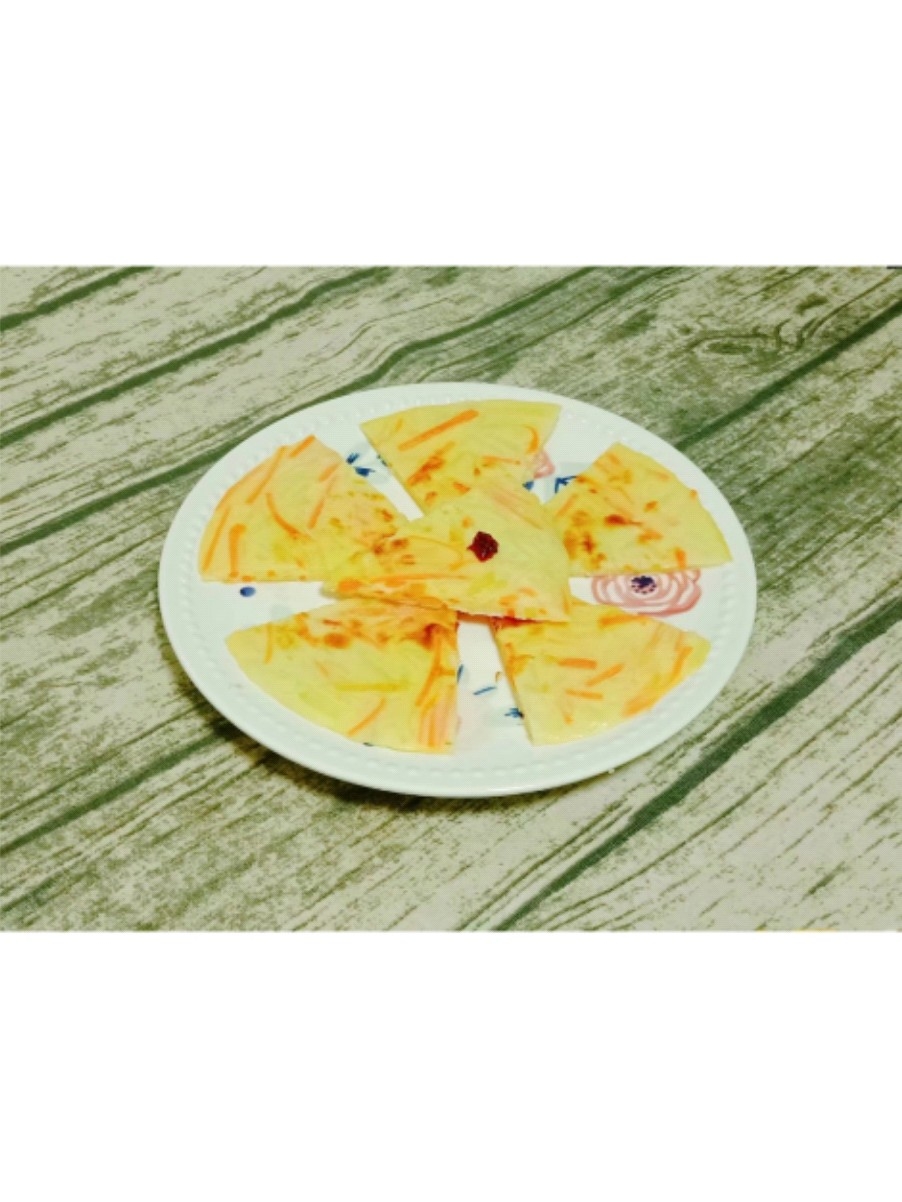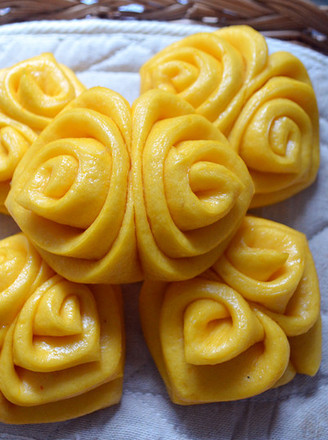Sauerkraut Vermicelli Bun
1.
Weigh the flour and water into the noodle bucket, generally the ratio of flour to water is 100:50-55, add 15 grams of corn oil, 15 grams of sugar, and 5 grams of yeast. When the weather is hot, you can appropriately reduce one or two grams of yeast. In cold weather, you can use lukewarm water to mix the noodles, the water temperature should not exceed 35 degrees, just feel a little warm with your hands.
2.
Beat the noodles into a smooth dough, then cover and leave to rise in a warm place.
3.
The sweet potato vermicelli is soaked in advance, and then cooked until it is mature. Even if you pinch it with your hands, you can still feel a little toughness, and it is not so easy to pinch. This makes it easier to keep the vermicelli well cooked when steaming later. Fans cut into pieces that are about an inch long. Too long is not easy to pack, and it doesn't need too much, just a small handful.
4.
Wash pork belly, peel, chop, add sauerkraut and vermicelli, add appropriate amount of salt, a little oil, steamed dumpling seasoning powder, and mix well. If it is eaten on the same day, you can add some light soy sauce. If it is eaten the next day or later, it is best not to add light soy sauce. The filling will become a bit sour after heating. Stir the stuffing clockwise or counterclockwise in one direction and let it stand for a while.
5.
The dough should be fermented to such a loose honeycomb shape. As for the time, depending on the temperature, the higher the room temperature, the faster, the lower the room temperature, the slower. In winter, you can use the oven to ferment, or boil a little hot water in a large pot, not too hot, and then sit the hair bowl in the hot water.
6.
After the dough is finished, roll it out, fold it up, down, left, and right twice, roll it out again, and fold it two to three times to exhaust.
7.
Then knead the dough into a strip, then fold it in three left and right, and then knead the long strip, repeating two to three times to exhaust the air. You can cut a mass to see if there are any pores. Basically, you can see no pores. When the dough is kneaded in place, the steamed buns are delicious.
8.
Roll the dough into long strips, divide them into several small doses, and wake up for 10 minutes.
9.
Take a small agent, knead the dough, and roll it out into a piece with a thicker middle and thinner edges. The edges should not be too thin, otherwise it will break easily when pinching the folds.
10.
Put in the right amount of meat, and then knead it like an origami fan. Novices should not put too much stuffing, otherwise it will be difficult to pack.
11.
After the buns are made, put them in a steamer and let them rise for a period of time, about 1.5 times their size. The specific time depends on the room temperature, about 10 minutes in summer is almost the same, and it takes 20 to 30 minutes in cold weather. The buns were almost ready to wake up, and the stove started to boil water.
12.
After the water is boiled, put the steamer on and start timing. It usually takes 18-20 minutes for meat buns and 13-15 minutes for vegetarian buns. When the time is up, turn off the heat, don't rush to open the lid, first let it stand for 3-5 minutes, and then carefully open the lid, taking care not to let water vapor drip onto the buns, take out the buns.


Tips:
1. The ratio of flour to water is generally about 100:50-55. Different brands have different water absorption. This ratio needs to be slowly and skillfully. Adding a little oil will help the dough to form gluten, and the kneaded dough will be more delicious. White sugar is a nutrient for yeast and helps fermentation, and it can be left alone.
2. After the dough is fermented, knead it in place until there are no pores, and the final bun will be delicious.
3. The meat buns generally need to be steamed for 18-20 minutes, and the stuffed buns for about 15 minutes. The bigger the buns, the longer the time, and the smaller the buns, the shorter the time. After the steamed buns are steamed, do not open the lid immediately, and let them stand for 3-5 minutes, especially in cold weather, to prevent the buns from expanding and contracting due to heat, and the buns will not taste good when they are cold.

